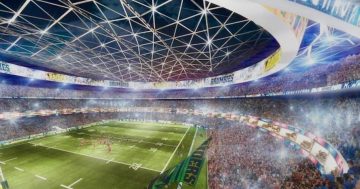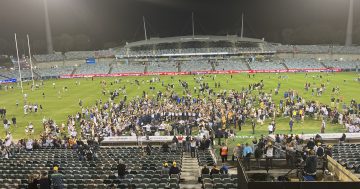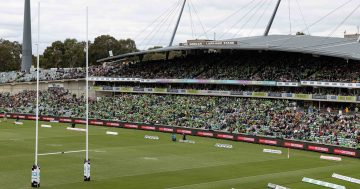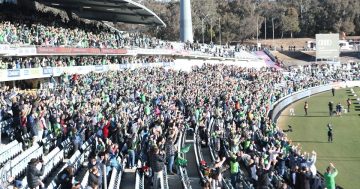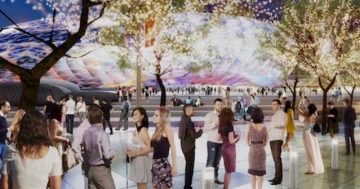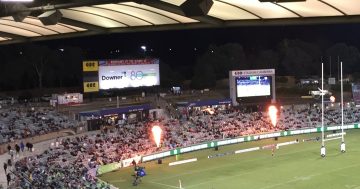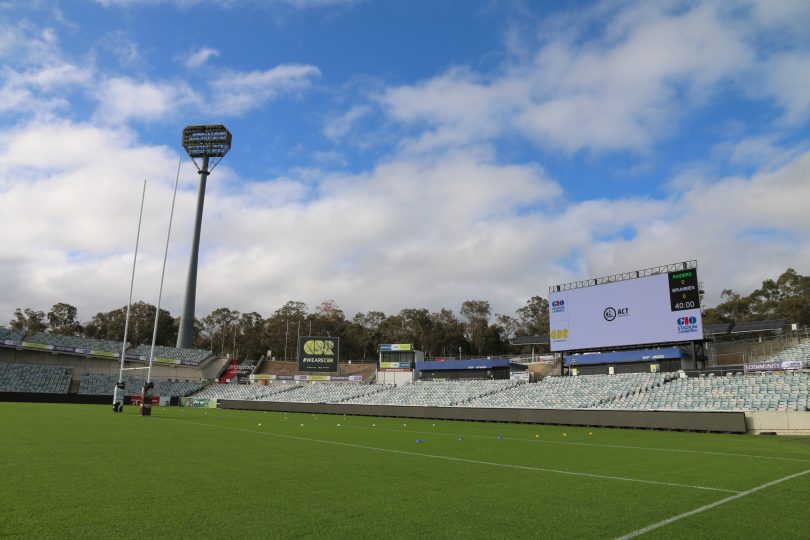
Canberra Stadium and its new screen. There is still plenty of life in it. Photo: Dominic Giannini.
As a teenager in Brisbane in the 1970s, I spent a fair amount of time on the terraces at Lang Park, using my schoolboys pass for free entry into a very basic arena known as the Outer, where alcohol and blood mixed freely under a blazing sun or in a tropical downpour amid the betting rings and brawls.
It provided a colourful addition to the main event on the field, which was full of hard men playing what we all thought was the greatest game of all, including legends like gentleman John Sattler, Wayne Bennett and a young Mal Meninga.
Even then, the lure of the grandstand, for an extra couple of bob, would have me make the walk around behind the goalposts to a gated entry into the Frank Bourke Stand where the view was better, no less visceral but a hell of a lot safer and sheltered from the elements.
So I’ve been watching rugby league, union and, as a later convert to the Victorian game, for a long time, and along with many other people rejoice in the Raiders’ renaissance under Ricky Stuart, and can well understand the desire for a new stadium built for Canberra’s climate in a more central location.
Lang Park is a well-connected stadium, only a short walk from the city, near railway lines and bus routes. Hell, I even ran home one winter’s evening when I missed the bus.
I understand the social glue that the Raiders and the Brumbies provide in a city like Canberra.
So I get it.
And I know the ACT Government lease is up in 2024, and the Federal Government is thinking about some sort of redevelopment at the Bruce precinct, although it hardly seems a priority at present.

The preferred Civic Stadium design option from the Arup report. Image: Supplied.
The Arup study released this week found both the city and EPIC options for a 25,000 seat stadium were feasible but that the Civic Pool site had obvious economic and connectivity advantages.
No surprise there, and advocates seized on the report to trumpet Civic as its preferred option, with one major media outlet spinning a $60 million saving if the project got off the ground as soon as possible and then rolling out ACT Liberal Senator Zed Seselja’s comments backing for the idea, as well as a visiting NRL chief Andrew Abdo.
What they and other supporters didn’t mention was the mind-boggling cost – half a billion dollars now, rising to more than $700 million by 2032.
Where that is going to come from, no one seems to know, certainly not all from the ACT Government which, after all, will provide the land.
That leaves the Commonwealth, the NRL or an as yet unknown private sector investor or consortium willing to sink money into something that most acknowledge won’t make much money.
Chief Minister Andrew Barr says any stadium project will be a decade-long project, and despite funding the Arup study and adding a stadium to the ACT’s long-term infrastructure list, has played down its prospects, telling the excitable mob skilled at spending other people’s money to cool their jets, and that the idea of prioritising such a project was fanciful.
The stadium is stuck in the queue behind some pretty serious infrastructure projects such as light rail, the Canberra Hospital Expansion, and the Civic Cultural Precinct, including a new Canberra Theatre, which many have pointed out will get more day-to-day use than a facility dependent on the winter football draw and a fickle concert tour program.
Mr Barr is clear that the Cultural Precinct is next in line, saying last month that he expected the first sod to be turned before the next election, with completion by 2025-26.
Canberra Stadium may be getting on, but it is still a serviceable arena with plenty of life left in it. Without some serious money coming from somewhere beyond the ACT Government, already running a balance sheet with enough red ink, the stadium, no matter how much we might like the idea, is a non-starter.
The message for all the boosters out there – including the Raiders and Brumbies, who already benefit from ACT taxpayers – is surely, “Tell ’em they’re dreamin’.”
At least until there is a financial backer.












